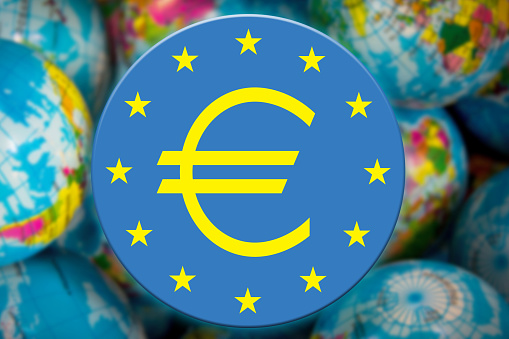The Sigmanomics Financial News Steam provides in-depth and comprehensive coverage of significant global financial developments. It focuses on big economic trends, company earnings reports, and changing market dynamics. This helps readers stay updated on the latest financial insights and analyses.
Financial News
Table of Contents
The Chief negotiator in Japan, Ryosei Akazawa expressed hopes of reaching a trade deal in June, 2025 on the key issue of its car exports. Optimism comes on the back of recent meeting with U.S. officials including Trade Representative Jamieson Greer, Treasury Secretary Scott Bessent, and Commerce Secretary Howard Lutnick. “We were able to have concrete discussions on topics such as expanding our bilateral trade, non-tariff measures, and cooperation on economic security,” Akazawa said. According to the Nikkei, Tokyo is reviewing its non-tariff barriers and seeking to expand imports of U.S. farm products.
Having a potential deal completed by June is the first time that a concrete date has mentioned, but Akazawa stated “It is not simply a matter of speed, as there are national interests that must ben protected on both sides, which will take some time.”
Economic Impact of Trade
The Bank of Japan lowered gross domestic product expectations from 1.1% to 0.5% and cut its growth forecast for 2026 to 0.7 percent, down from previous projection of 1.0 percent in light of recent trade tariff unknows. The BoJ said, “Japan’s economic growth is likely to moderate, as trade and other policies in each jurisdiction lead to a slowdown in overseas economies and to a decline in domestic corporate profits and other factors.”
The auto sector in Japan in particular has witnessed direct negative effects of this trade war as the U.S. is Japan’s key trading partner for vehicles, making up 25 percent of U.S. sales deriving from cars exported from Japan. From a financial standpoint, up to five major carmakers from the region are at risk of up to $25 billion annually.
Financial Markets Impact
The USD/JPY is currently trading within a developing triangle on the weekly chart, within price action of 158.65 to 140.30 zone. As trade talks continue, we expect for this range to hold, with key time frame of a potential breakout mid July or beginning of March. Option traders will be looking into iron condor as the pair range bounds followed by vertical strategies or straddles once significant price action and or direction occurs.
Intraday traders should be mindful of the key zones noted above as short term (hourly and daily) moves is likely to be capped until a deal by the Trump administration and Japan arises.
Explore More on Sigmanomics
Related Articles:
US Dollar to Japanese Yen Exchange Rate Chart | Xe
Japan’s finance minister calls US Treasury holdings ‘a card’ in tariff talks with Trump | AP News
Japan’s auto industry faces tariffs that could cost $25 billion a year – The Washington Post

Ronald Francois
Ronald is a senior market strategist at Sigmanomics.com, bringing over a decade of hands-on experience in equity markets and three years of specialized expertise in options trading. Known for his sharp fundamental analysis and deep understanding of macroeconomic trends, Ronald provides readers with actionable insights that bridge the gap between institutional strategy and individual investor needs.
First quarter earnings for Mastercard topped expectations, with the company reporting EPS of $3.73 versus analysts forecasts of $3.57, posting a 17% year-over-year increase to $7.25 billion. Cross-border volumes have experienced a 15% rise, reflecting strength in travel and commerce.
Mastercard recently announced “Agent Pay,” an AI payment technology designed to facilitate commerce. They have announced partnership agreement with Corpay enhancing cross-boarder payment solutions. This partnership improves:
- Compliance and transparency
- FX payment routing
- Integration with corporate treasury systems
Further, while Mastercard’s collaboration with CIBC led to CIBC Adapta Mastercard, serving as the first credit card in Canada that rewards cardholders for everyday purchases.
Mastercard’s holds a buy rating among 27 analysts as the stock closed at 546.63 as of 5/1/25, which is slightly below its 52-week high of 582.23. Worth nothing that 12 month price target among analysts is $606.85, on the back of earnings growth and PEF ratio. The company is projected to achieve a 15.7% annual growth rate over the next five years, compared to 14.3% over the past five years.
Risks that Mastercard faces include forex volatility and geopolitical tensions. While exposure globally presents risks, Mastercard’s consistent growth offers a compelling investment case.
Explore More on Sigmanomics

Ronald Francois
Ronald is a senior market strategist at Sigmanomics.com, bringing over a decade of hands-on experience in equity markets and three years of specialized expertise in options trading. Known for his sharp fundamental analysis and deep understanding of macroeconomic trends, Ronald provides readers with actionable insights that bridge the gap between institutional strategy and individual investor needs.
Table of Contents
U.S. Trade Representative Jamieson Greer recently said that “we have deals that are close,” with reference to trade deal that the White House are in talks with on key trading partners. These talks as well as recently optimism are the key reasons why the S&P has recently extended its 7 day gain.

Many traders are eager to see progress and better yet a deal arise amid recently fluctuations in the market. At the same time, businesses are even more eager as operational costs have increased. For example, Snap has fallen over 10% in value, while Australia’s CSL has been negatively impacted amid tariff announcements. With the lack of clear timelines and in ability for companies to adapt to changing trade landscapes uncertainty will weigh on the S&P and likely reverse course should matters results not come to light in the near term.
Markets that will see a positive impact should news of a tariff deal arise are the Industrial, manufacturing, and automotive sectors. Specific companies within these sectors to keep a close eye on are General Motors (GM), Tesla (TSLA), General Electric (GE), and Caterpillar (CAT).
Explore More on Sigmanomics
Read more

Ronald Francois
Ronald is a senior market strategist at Sigmanomics.com, bringing over a decade of hands-on experience in equity markets and three years of specialized expertise in options trading. Known for his sharp fundamental analysis and deep understanding of macroeconomic trends, Ronald provides readers with actionable insights that bridge the gap between institutional strategy and individual investor needs.
The S&P 500 closed at 0.1% increase today with volume marking its highest level since April 24th. As short and medium term technical point to further gains, investors should tread carefully due to trade tensions and a contracting U.S. economy.
From a technical perspective, the RSI remains bullish with further gains possible as the indicator has yet to reach overbought levels. Key resistance levels lie at 5,657 (61.8%) retracement from February to April swing high/low .

Many investors will be looking at notable pullbacks as a buying opportunity with focus on tech stocks – mainly AI.
Focus should remain on the economic calendar in the medium to long term with events such as Nonfarm Payrolls, Personal Consumption Expenditures, and First Quarter GDP. Not to overlook, consumer confidence plunged to a 5 year low and another subpar reading could erase recent gains. Keep a close eye on this report.
Explore More on Sigmanomics

Ronald Francois
Ronald is a senior market strategist at Sigmanomics.com, bringing over a decade of hands-on experience in equity markets and three years of specialized expertise in options trading. Known for his sharp fundamental analysis and deep understanding of macroeconomic trends, Ronald provides readers with actionable insights that bridge the gap between institutional strategy and individual investor needs.










